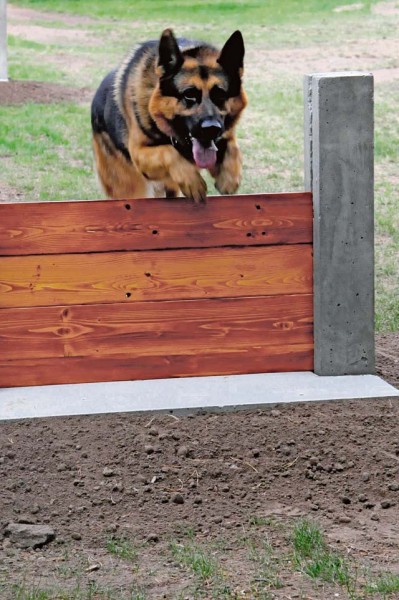 “Get ‘em! Halt! Heel!”
“Get ‘em! Halt! Heel!”
These are examples of commands given by Staff Sgt. Michael Judy, 86th Security Forces military working dog handler, to his 2-year-old military working dog, Risky.
The start of these puppies’ new lives is the day they are selected to become a military working dog.
“The MWDs are procured through the 341st Training Squadron located at Lackland Air Force Base, Texas,” said Tech. Sgt. Nicholas Ramsey, 86th Security Forces Squadron MWD training manager. “The length of the training depends on the dog, roughly 90 days, to include narcotic and explosive detection and another 90 days of patrols. After they have achieved certifications they are then transferred throughout the four branches of the military.”
Ramstein SFS maintains the second largest kennel outside the U.S. With 22 dogs and handlers, one kennel master and four trainers, they are the U.S. Air Forces in Europe and Air Forces Africa’s lead kennel.
The main goal is to stay vigilant and increase proficiency. Military working dogs and their handlers train in a wide variety of scenarios and environments.
“Before each shift we try to train with the dog,” Judy said. “Even if it’s just the basic centerline drills or playing catch, the dogs are having fun. At the same time it’s teaching obedience and helping to build that relationship with the dog.”
Ramsey said the training establishes a close bond between working dogs and their handlers, allowing them to work efficiently together to protect the base and its residents. That bond is what enables the handler to trust his canine partner to detect those threats.
What happens when a handler is selected for a deployment?
“A dog and handler will deploy together,” Ramsey said. “Once a dog and his handler get tapped for a deployment, they will go to a regional training center.”
During the preparation phase, dogs are put through rigorous training to ensure they can perform a variety of tasks, including implementing take downs, detecting explosives and locating drugs in hostile environments. The diverse training also prepares the working dog team for possible missions and deployments to unpredictable and potentially dangerous locations.
“During a deployment, you build a great bond with your dog,” Ramsey said. “You care for them, you live with them and, if you go to work with the Army and Marines outside the fence, you are depending on your dog to detect any explosives that can harm the guys behind you. So that bond is important.”
Handlers don’t just work with professional K-9s daily, they find satisfaction in watching these young dogs grow into military working dogs.
“I look forward to coming to work every day,” Judy said. “Seeing all the goals you set for the dog as much as you can and see how far they are willing to go, after you build that rapport with them, you praise them and they work hard. It’s better than any award I will ever receive.”







